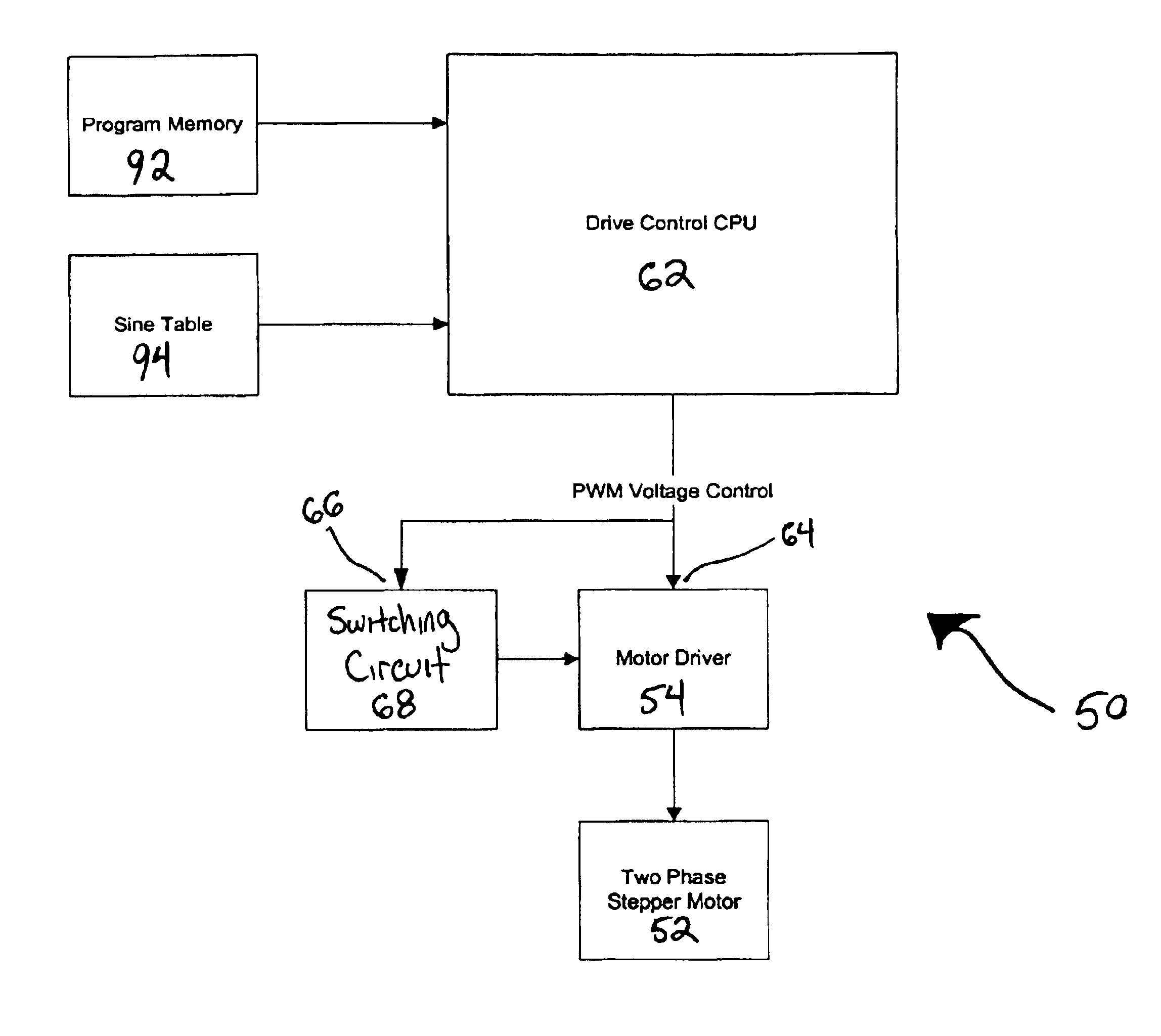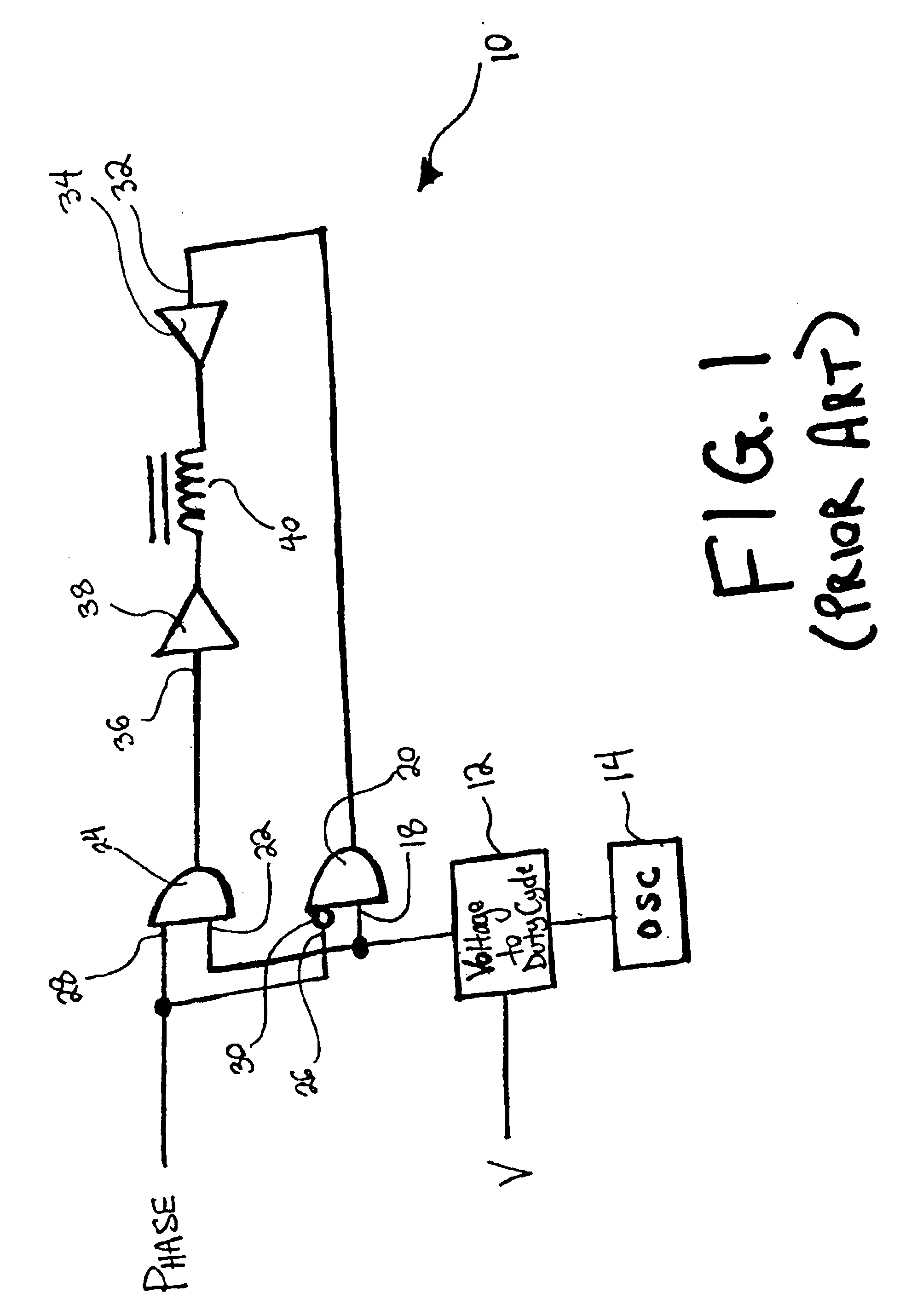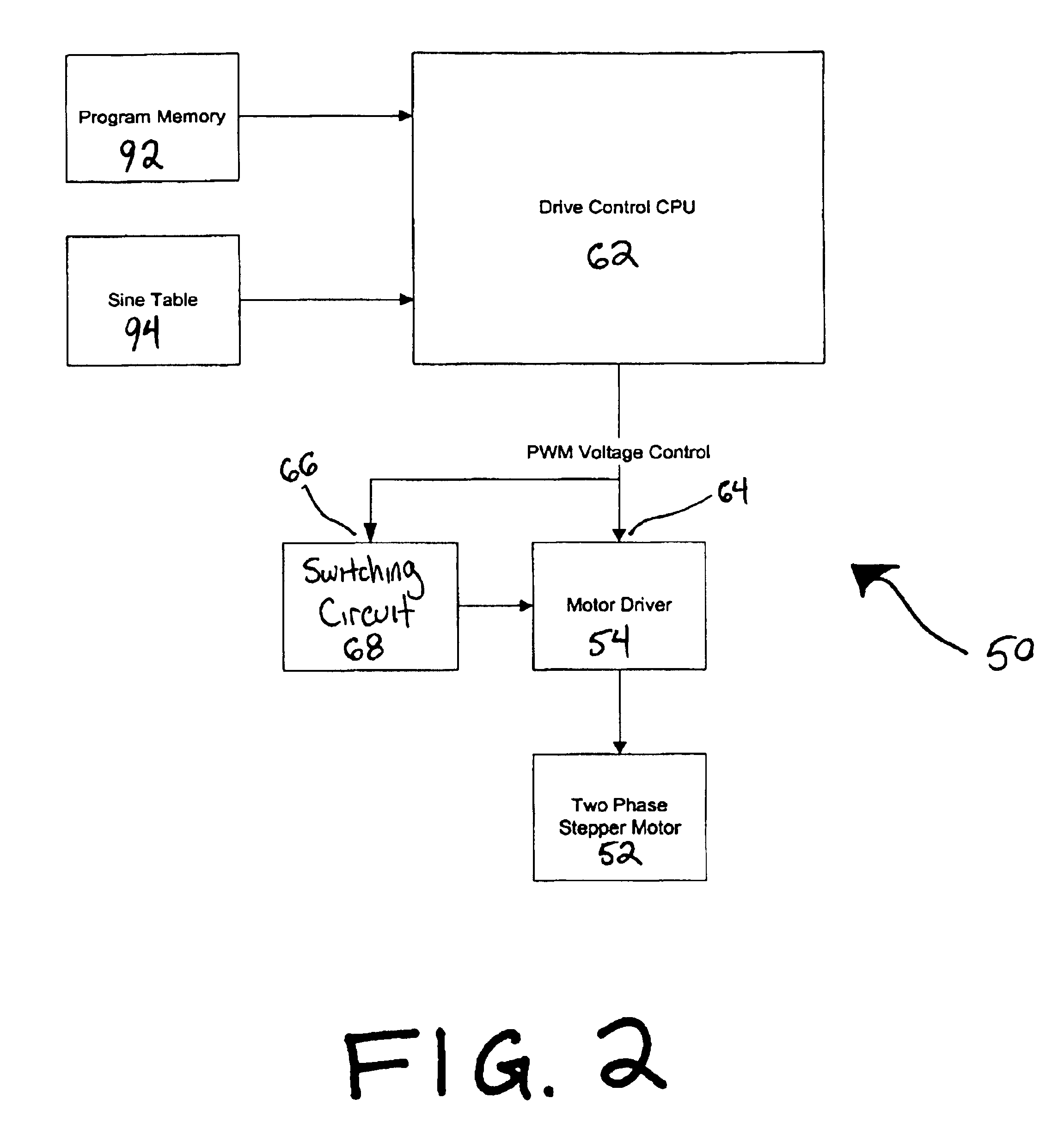Circuit for driving a stepper motor and method of controlling a stepper motor driver
a stepper motor and stepper motor technology, applied in the direction of electric controllers, dynamo-electric converter control, instruments, etc., can solve the problems of noise, one disadvantage experienced, and the conventional circuit b>10/b> experiences several, and achieve the effect of eliminating the operation noise of the motor
- Summary
- Abstract
- Description
- Claims
- Application Information
AI Technical Summary
Benefits of technology
Problems solved by technology
Method used
Image
Examples
Embodiment Construction
[0021]Referring now to FIGS. 2 and 3, a stepper motor system of the type suitable for use in the present invention is generally designated 50, and includes a stepper motor 52 and a motor driver 54 for driving the stepper motor. The stepper motor 52 is preferably a two-phase motor, and the motor driver 54 is preferably an H-bridge circuit, as are known in the art. The motor driver 54 includes separate first and second drivers 56 and 58, respectively, for driving both respective ends of a motor winding 60 of the two-phase motor 52. A PWM voltage control signal is applied directly from a drive control CPU 62 to an input 64 to the first driver 56 of the motor driver 54, as best seen in FIG. 3.
[0022]The same PWM signal is also applied directly from the CPU 62 to an input 66 of a switching circuit 68. The switching circuit 68 preferably includes an exclusive OR gate 70 and a charge pump 72 as its main components. A first input 74 of the exclusive OR gate 70 connects directly to the switch...
PUM
 Login to View More
Login to View More Abstract
Description
Claims
Application Information
 Login to View More
Login to View More - R&D
- Intellectual Property
- Life Sciences
- Materials
- Tech Scout
- Unparalleled Data Quality
- Higher Quality Content
- 60% Fewer Hallucinations
Browse by: Latest US Patents, China's latest patents, Technical Efficacy Thesaurus, Application Domain, Technology Topic, Popular Technical Reports.
© 2025 PatSnap. All rights reserved.Legal|Privacy policy|Modern Slavery Act Transparency Statement|Sitemap|About US| Contact US: help@patsnap.com



